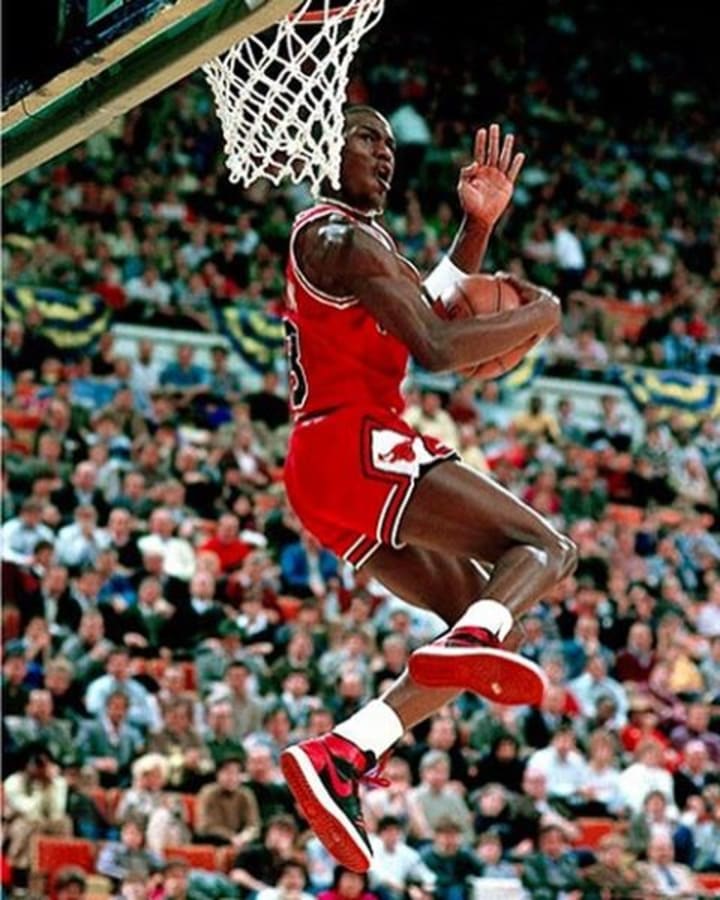How Adidas' Biggest Mistake Cost Them Jordan to Nike
A move that cost Adidas their throne.

We can all agree that back in the 70s, there was one king among the sneaker brands, Adidas. The behemoth brand of Adi Dassler was present everywhere, on the streets, on the grounds, and in the courts. Adidas did not have any significant rivals in the 70s. However, one mistake cost them their throne as the undisputed king of sneaker brands.
The rookie joins the game
In the 1970s, a small company, Nike Inc., was working on a product to dominate track sports. Earlier known as "Blue Ribbon Sports", Nike had recently come up with a "waffle pattern" sole design and was already in much demand amongst big track names. Even though becoming a household name in track sports, Nike was no competition to Adidas and Converse, the two dominating brands in basketball.
The 1970s were good for Nike as their sales skyrocketed from $28.7 million in 1973 to $867 million by the end of 1983. But shortly after, things went grey after Nike reported their first quarterly loss in 1984.
The tide for Adidas started to change during the 1984 NBA draft. Michael Jordan played his first season at North Carolina and was named ACC Rookie of the year for 1982. Soon after, Jordan left North Carolina and was selected by the Chicago Bulls as the third pick for the 1984 NBA draft.
The bidding wars
Jordan wore Converse at North Carolina because his coach Dean Smith was paid about $10,000 a year to associate the brand with his players. But Jordan had unmatched loyalty for the german brand, Adidas. More than anything, Jordan wanted to wear Adidas in the NBA. Adidas on the other hand recognized Jordan as an exceptional player but didn't make an offer.

Disheartened, Jordan decided to try Converse. At the meeting, the representatives at Converse said, "We are basketball.". Back then, Converse had big players like Magic, Bird, Dr. J, and Mark Aguirre. Jordan was intrigued by their pitch and the dialogue started.
Jordan asked, "Where do I fit into the conversation?"
The president of Converse, John O'Neil, answered, "We’ll treat you like all our other superstars."
Michael's father, James, wanted in. He asked, "Don’t you guys have any new, innovative ideas?"
There was dead silence. Converse stood no chance.
Converse had offered Jordan a package of $100,000/year, which was standard among other superstars at the time.
One above all
Nike was desperate and was scouting for players who showed the most potential to become great. Nike needed to sign a superstar to get the company back on track. They knew that Jordan was the closest to becoming an NBA superstar.
But Jordan didn't even want to meet up with Nike. Fixated on Adidas, Jordan refused any meetings with Nike. That was the kind of difference in the status of Nike and Adidas. Jordan had no interest in Nike and told his agent, David Falk, "Just do what you need to do to get me with Adidas."
Falk had a good relationship with the people at Nike. At that time, most of his clients wore Nike, including Moses Malone and Bernard King. Jordan on being insisted by his agent and his father agreed to meet with Nike.
At the presentation, Jordan was shown the new Nike red and black design shoe. Jordan told Moore, the reason he preferred Adidas was that they were lower to the ground, unlike Nike. Moore told Jordan that Nike can tailor the shoe to his liking. No other company was doing this at that time.

Nike offered Jordan $500,000 a year for a 5-year deal, which was ludicrous at that time. The deal included other parts and stock options which roughly summed up to $7,000,000. The biggest deal before that time was New Balance's deal with James Worthy at $150,000/year for 8 years.
The mistake
Nike's contract included a clause that said Jordan had to complete one of the three things in the first 3 years:
- Win Rookie of the Year
- Become an All-Star
- Average 20 points per game
Even after being offered the greatest shoe deal in NBA history, Jordan's loyalty was unfazed. He went back to Adidas and said, "This is Nike's deal, If you come anywhere close to this, I'll sign with you right now".
Adidas' reply was the biggest mistake they ever made.
Adidas did not offer a deal with Jordan because the officials thought that he was "too short".
It was over.
The rise of Air Jordan

Jordan went on to sign with Nike. Jordan had a say in designing the shoe now. In the coming weeks, Falk came up with the name "Air Jordan" and Nike focused on creating marketing strategies. The 1984-85 season started and everything went Nike's way.
The Air Jordan 1's were banned from NBA due to a violation of the uniform code. Nike used this opportunity to market the shoes. The Air Jordan 1's became infamous among the NBA fans.
As for the clause in the contract, Jordan completed all 3 conditions in his rookie year. Jordan averaged 28.2 points per game, became an All-star, and won the Rookie of the year award.

In March 1985, Air Jordan hit the nationwide stores. By the end of the year, the Air Jordan brand had made $100 million in revenues. Phil Knight called it "the perfect combination of quality product, marketing and athlete endorsement."
Rest is history
In 2019, Nike's share (including Air Jordan) in the basketball performance market was 86% and in the lifestyle-basketball category was 96%. In the 2019-20 season, 77% of all NBA players wore either Nike or Air Jordan. Nike’s $40 billion in revenue in 2019 was 60% more than Adidas’ and 43 times what it was before it added Jordan.
The current market cap of Nike is $210.56 Billion, thrice the market cap of Adidas($71.60 Billion).
It is hard to imagine what it would be like if Jordan wore Adidas. Air Jordan brand is now a representation of wealth, glory, and athletic lifestyle. Would Adidas have succeeded if they had signed Michael Jordan back then? Maybe in an alternate reality. Meanwhile, Nike continues to build a legacy, dominating and leading the sneaker culture.






Comments
There are no comments for this story
Be the first to respond and start the conversation.